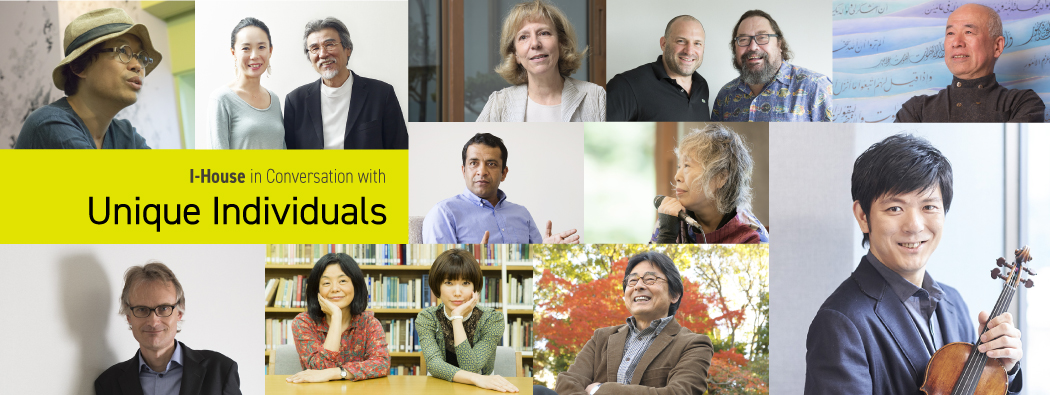In 2016, the inscription into the World Heritage List of Le Corbusier’s National Museum of Western Art in Tokyo drew public attention in Japan to modern architecture.* Examples of this style surround us in our daily lives—from museums and gymnasiums to city halls and libraries—but many are more than a half-century old, and debates over whether to preserve them or tear them down are taking place all over Japan. We invited Ana Tostões, chair of DOCOMOMO International, an organization dedicated to the conservation of modern architecture, to discuss how she sees the current situation, along with architectural historian Matsukuma Hiroshi.
[March 2017]
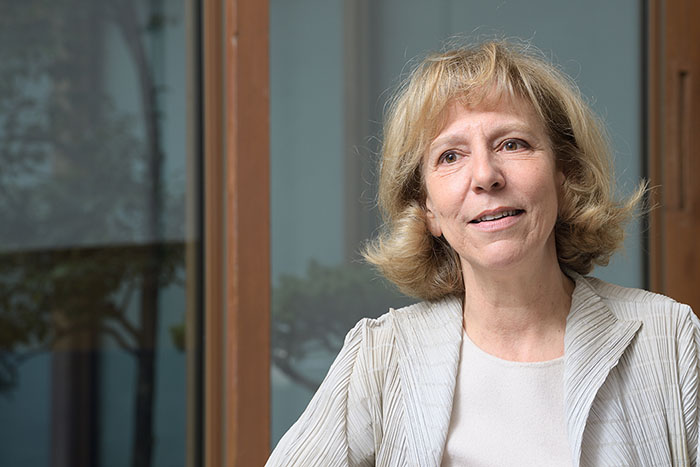
Born in Lisbon, Portugal. Architect, architectural historian, and full professor of architectural history and theory at the Instituto Superior Técnico of the University of Lisbon. From 2010, the third chairperson of DOCOMOMO International. Active in research on the culture of architecture and urban history as seen in the interdependent relations among modern Europe, Africa, Asia, and the Americas, she is the author of numerous papers and books and organizer of many exhibitions and conferences. These achievements were recognized in 2006 by the president of Portugal, with the title of Commander of the Ordem do Infante Dom Henrique.
Matsukuma Hiroshi: Can you begin by telling us a bit about DOCOMOMO?
Ana Tostões: The Modern Movement was extremely important in 20th-century architecture, and DOCOMOMO is an international organization created for the purpose of expanding its historical and cultural significance by promoting the documentation and conservation of extant modern buildings and their environments. Since its founding in 1988, with the participation of researchers in modern architectural history, architects, structural engineers, materials specialists, and people involved in urban planning and administration, it has grown to 69 chapters worldwide; its headquarters is currently in Lisbon. In addition to educational activities, such as the sponsoring of symposiums and the publication of a journal dedicated to broadening understanding of modern architecture, we identify valuable works to be preserved for future generations, study and archive them, and provide technical support.
Matsukuma: As chair of DOCOMOMO, you travel all over the world, including Japan.
Tostões: The Modern Movement in architecture was transmitted worldwide, giving birth to unique expression in specific locales. Japan has many splendid examples of modern architecture which I frequently visit. Among them, International House has great significance as a place etched in Japan’s postwar historical consciousness, one where the rebuilding of East-West relations in the years after the war was conceived—an aspiration that is beautifully expressed in the building’s design, by the three great architects Maekawa Kunio, Sakakura Junzo, and Yoshimura Junzo. It is international in character, but far from being an example of some stateless “international style.” I think it is a mastepiece that embodies how Japanese architecture developed a modern vocabulary while at the same time maintaining its traditions and cultural roots.
I was also amazed to discover the “wood-frame” modernism of the 1920s in such buildings as the Chochikukyo house in Kyoto [Fujii Koji, 1928]. Tange Kenzo’s Yoyogi National Gymnasium is a remarkable fusion of high technology and art—an epoch-making building when it was completed in 1964. And the Teshima Art Museum [Nishizawa Ryue, 2010] in Kagawa, which I recently visited, is beautifully integrated with the surrounding scenery and the color of the sea. It is a masterful piece, in which architecture and art lent wings to the efforts of an island plagued by issues of industrial waste to revive itself in a creative transformation.
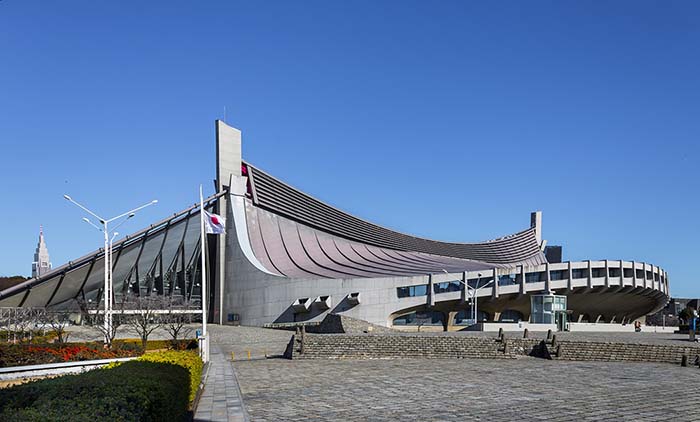
Yoyogi National Gymnasium ©Wikimedia Commons / Kakidai
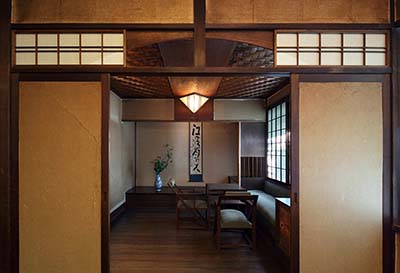
Chochikukyo house (Courtesy of Takenaka Corporation, Photo by Furukawa Taizo)
Matsukuma: Different places have different issues, I suppose, but what topics are emerging globally these days?
Tostões: Recently the concept of reuse has drawn a lot of attention. DOCOMOMO was started to focus on the conservation and restoration of modern architecture, and on the preparation of documentation for that purpose. But over the past 30 years, technological progress has helped put reuse on the agenda. Fundamentally, buildings should be used, and for that purpose their functions must be renewed. While we believe it’s very important to preserve the original character of a building, in some cases we need to envisage a kind of adaptive reuse. In that sense, modern architecture is kind of a work in progress. Of course there are cases in which restoration is required. But there are many buildings which will be lost unless repurposed and reused. Japan has many effective examples, like I-House, of rehabilitation and, in some cases, transformation. In recent years Japan has proven itself a leader in meeting the demand for what we might call normative functional renovation—rehabilitation that includes anti-seismic retrofitting and energy conservation.
Matsukuma: Yes, but even in Japan, many historical modern buildings are being torn down.
Tostões: Well, I just visited Okinawa, where I saw Naha Civic Hall [indefinitely closed to the public as of May], which is being proposed for demolition because seismic retrofitting has been judged to be unusually costly and difficult. But this building has symbolic value as the site of the ceremony commemorating Okinawa’s return to Japanese sovereignty, and as a beautifully designed building embodying a fusion of modernism and traditional Okinawan culture. It would be a pity to destroy it. Of course I am well aware of the economic constraints, but preserving symbols of regional society is crucial to the community and the people.
There’s a very interesting case of reuse in São Paulo in Brazil. In the 1970s, a big factory built earlier in the 20th century was being closed, and the architect Lina Bo Bardi joined workers who had lost their jobs and other members of the local community in a movement to prevent the factory from being demolished. The original idea had been to build luxury houses. But the movement was so strong that the decision was made to preserve the basic structure of the factory and reuse it, creating a theater, library, swimming pool, restaurants, and cafés. For that era, it was a pioneering action.
Matsukuma: That’s a valuable example of how citizens can take the initiative in architecture. In Japan the inscription of the National Museum of Western Art into the World Heritage List has gradually led to greater public awareness of modern architecture. Yet there are still many people who would say they see the value of traditional architecture like the temples Horyuji and Kiyomizudera, but have difficulty understanding modernism.
Tostões: That is true in other countries as well. DOCOMOMO has been advocating for the achievements of Le Corbusier for many years now, but it has taken a long time for their value to be recognized. Le Corbusier was an outstanding architect who had an enormous impact all over the world—in the Soviet Union, Brazil, Argentina, North America, Japan, India. And at the same time he drew inspiration from traditional culture, absorbed it, and applied it in other regions. In a sense, the World Heritage inscription is a victory for our efforts to have his value recognized, and a first step toward acknowledgment in Japan of the value of modern architecture in general. I’ll repeat: it’s very significant when a building becomes a symbol of a place and people come to take pride in it. For this, the understanding of the general public is a prerequisite, and we must foster their eye for architecture. Nowadays, with social networking, once the importance of a building is recognized there is great potential for organizing a preservation movement.
Moreover, I think shrines and temples have something fundamental in common with modern architecture. Traditional Japanese architecture, from a Western perspective, seems very modern, even if it dates from before modern times. Not only in its modular system of construction, but also in its unique approach to space, especially in its asymmetry and how it adapts itself to the surrounding landscape. This has been cultivated in Japan since antiquity, and is completely different from the Western tradition. And because of this, I think we have to rewrite the history of architecture.
Matsukuma: You mean, the history of modern architecture has been produced from a completely Western perspective, and needs rewriting to counter that?
Tostões: Yes. The 20th-century architecture of Japan and the rest of East Asia is beginning to be reevaluated, and the postwar period in Japanese architecture is really rich, quite amazing. The architects were lucky to have so much work, and outstanding architects emerged one after the other, with a number of pioneering achievements and movements starting in Japan. I don’t think many Japanese people are aware of what high-quality architecture postwar Japan produced. So it is important to spread that awareness; in order to rewrite the history of postwar architecture, an effort must come from Japan itself. Of course there are a lot of great achievements in Western architecture. But the West was also amazed when it came into contact with the contemporary architecture of Japan—for instance, with the Metabolist movement of the 1960s in Japan, which Maki Fumihiko’s Investigations of Collective Form, published in English in 1962, helped introduce to the West. The Archigram movement** in Britain, which emerged in 1968, took ideas from Japan and yet the literature on the period mentions only Yoyogi Stadium, but not Maki or Metabolism. So we really need to reexamine the history of 20th-century architecture.
Matsukuma: In conclusion, what is the value that the architectural heritage possesses?
Tostões: I think that architecture provides the most comprehensive image of a society and a nation. It is the mark of the past—how can we imagine a country or its culture without thinking about its architecture? The Parthenon of ancient Athens or the ruins of the Incas in South America are quite complete expressions of their respective cultures. As human beings we live as a connection between past and future. Without knowing the past, it is impossible to build the future. This is why the architectural heritage is of such value. Think of Tange’s Hiroshima Peace Memorial Museum and Peace Memorial Park [1955]. I must confess it took me a long time to go to Hiroshima because I was frightened, really, of confronting the horror of what happened there. But I did go there, just recently, and found that it was far from oppressive, that it was a superbly realized space that inspired our thoughts and yearnings for peace.
Matsukuma Hiroshi: Tange graduated from high school in Hiroshima, and was studying at the University of Tokyo when the atomic bomb was dropped. When the university received a request to assist with planning the restoration of the city, Tange volunteered and went to the city the year after the bombing, where he saw the dome. Three years later there was a competition to select the architect, and Tange submitted a plan which proposed maintaining the dome. There was considerable divergence of opinion at the time regarding whether the dome should be preserved. The city of Hiroshima made the final decision to retain the dome 17 years after Tange submitted his proposal. He understood the importance of the dome in terms of what it could say to later generations.
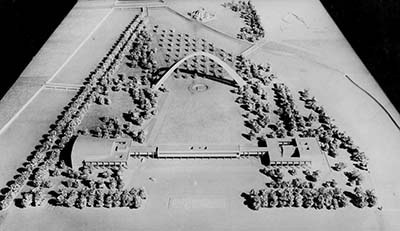
Tange’s design for the Hiroshima Peace Memorial Park. The A-Bomb Dome (top), arch (now the Memorial Cenotaph), and the Peace Memorial Museum form a line of sight through the park. ©Hiroshima City Archives
Tostões: The dome was once an ordinary building, but became a symbol speaking of Hiroshima’s tragic past, and an architectural inspiration for creating a better future. Thanks to your explanation, I understand much better what I felt there, and I think this provides a good answer to the question of why architectural heritage matters.
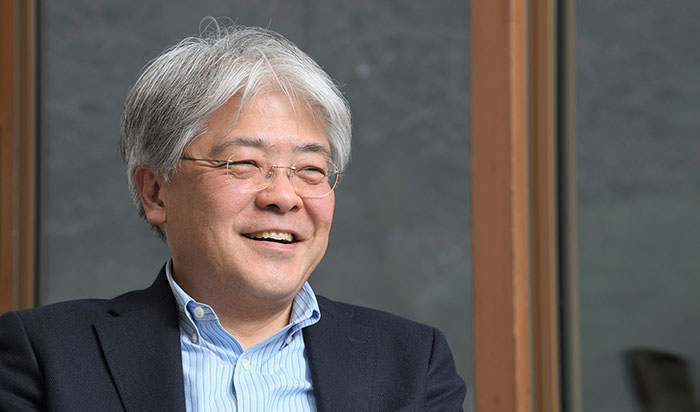
Born in Hyogo Prefecture in 1957. After graduating from Kyoto University, he joined the architectural office of Maekawa Kunio. In April 2000 he became an assistant professor at Kyoto Institute of Technology, and professor in October 2008. He earned his Ph.D. in engineering from the University of Tokyo. He is a specialist in the history of modern architecture and architectural design theory. From May 2013 he has served as chair of DOCOMOMO Japan and as a member of the steering committee of the National Archives of Modern Architecture of the Agency for Cultural Affairs
*Modernism was a movement to create architecture suited to society in the wake of the Industrial Revolution, based on the rationalist and reformist thought and the technological innovations that arose in Europe in the late 19th century. In place of the stone and brick that characterized baroque and gothic styles, concrete, glass, and other industrial materials were employed in service of design intended to be functional and universal.
**Archigram was a movement led by a group of avant-garde architects active in London in the 1960s and ‘70s.
This interview was conducted on March 14, 2017.
Editing: International House of Japan, Program Dept.
Photographer (interview): Matsuzaki Nobusato
©2019 International House of Japan
To view other articles, click here.
